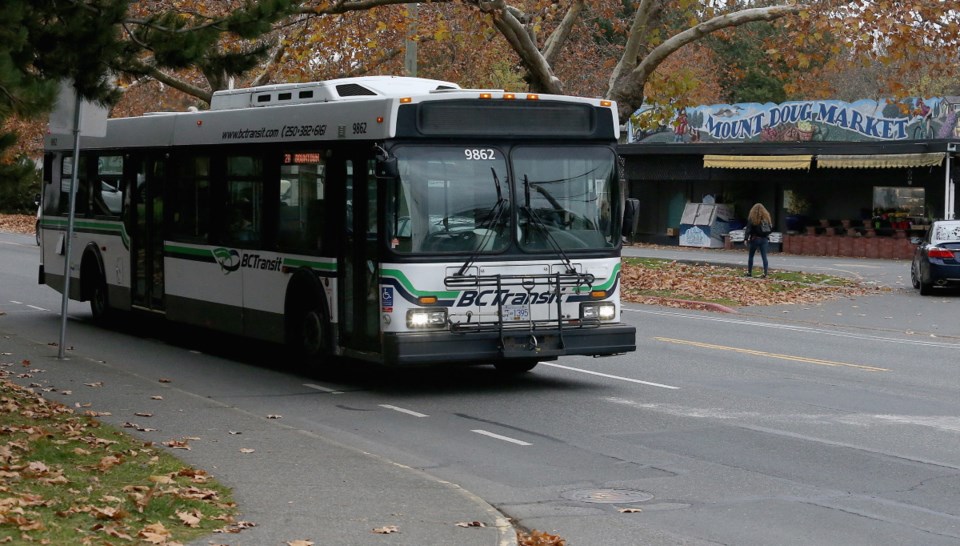For Jean Oliver, Saanich’s Cedar Hill rec centre isn’t just some place to do crafts.
It’s where she paints, among other painters in a proper studio, which allows her to eke out a living despite health challenges.
“Without it, I wouldn’t have been working for the past couple of years,” she says.
Alas, sometimes the studio isn’t available until evenings on weekends. That’s a problem, because the bus Oliver rides home packs it in early on those nights.
She could walk 10 minutes to another bus route that would, eventually, get her home via downtown, but that would not only tax her physically but entail navigating some dark and somewhat spooky streets in a whistling-past-the-graveyard kind of way. A $15 taxi ride is out of the question, given her income.
“I basically can’t use the art studio on the weekends,” she says. No studio, no art. No art, she doesn’t eat. Oliver relies on public transit for the rest of her life, too. “My world shuts down without the buses,” she says.
She’s not the only one in that boat, of course. Plenty of others live their lives within the strictures of public transit schedules, which is generally OK if those lives are lived downtown, but tougher for those trying to get from one relatively out-of-the-way part of our community to another. Transit planners might look at routes like that and decide that ridership numbers don’t merit more frequent service, but if you happen to be one of the few depending on that bus, your perspective will likely differ.
“I get that there’s a bottom-line issue,” Oliver says. It’s just that the need to hold down costs clashes with another challenge: “How do we provide access to people who need it?” Just something to think of as the regional transit system’s directors get their first look at next year’s provisional budget today.
The Victoria Regional Transit System’s operating budget is just under $141 million this year. It’s expected that less than a third of that, $44 million, will come from fares and advertising revenue. Public subsidies include $40 million from the province, $30 million from property taxes and $19 million from a 5.5-cent-a-litre gas tax (which draws grumbling from some motorists whose jobs/locations mean they are paying for a transit system they cannot use). Some reserve funds are also part of the mix.
The 2020-21 provisional budget is $146.7 million, including $1.7 million worth of expanded services.
Is that too much? Enough? It stands to reason that as Victoria’s population grows, and as officialdom tries to crowbar as many people as possible out of their single-occupant vehicles, then the system is going to have to grow, too, and that will cost money. It just comes down to who pays how much for what level of service.
Priority transit lanes and GPS-equipped buses that take the guesswork out of knowing when to show up at the bus stop have helped increase ridership — including a 44 per cent jump in five years on the main route from the burgeoning West Shore to downtown. At the same time, though, the system was plagued with cancellations in September and October as mechanics struggled to keep the system’s 304 buses, which average 12 years of age, on the road.
It seems self-evident that if you’re going to encourage people to ride the buses, there had better be buses to ride. We’re told that replacements are scheduled to arrive throughout 2020, and that 10 battery-electric versions are to arrive the year after that. (Election-year politics played a role in the addition of the latter vehicles. Just as Stephen Harper pitched in $33 million of federal money for the McKenzie interchange during the run-up to the 2015 election, Justin Trudeau this summer promised $31 million toward the purchase of 118 B.C. Transit buses, including those battery-electric ones and another 21 compressed natural gas units that will be based at Langford.)
Those are all great, big numbers, large enough to make taxpayers swallow their gum. Still, as Jean Oliver demonstrates, the basic challenge remains: devising a system that takes people where they need to go, when they need to go there.



